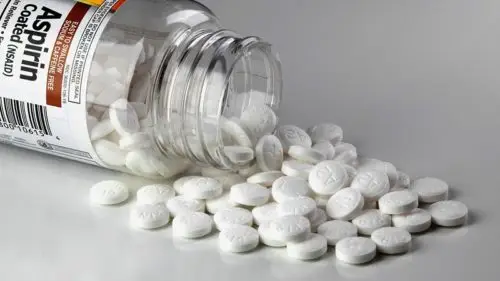A fascinating piece of research recently came out indicating that some scoliosis cases may be caused by neuroinflammation, which is simply inflammation within the neurological system of the body.[i] The best part of this research is that two over-the-counter medications were found to significantly reduce scoliosis in juvenile fish.
Researchers ran tests with both aspirin and N-acetylecysteine. When aspirin was administered before scoliosis started, they found they could alter the number of scoliosis cases and delay the age of onset, but the severity of the curve wasn’t affected. So, it appeared that aspirin could stop or delay the formation of scoli in those with a genetic predisposition towards it.
N-acetylecysteine, which is better known as NAC, is a readily available supplement that has antioxidant and anti-inflammatory properties. It is considered safe for human use, and is generally well-tolerated.[ii] [iii] [iv]
Here’s the exciting part: when NAC was introduced after the scoli had already started to develop in the body, the supplement could significantly reduce the curve progression in the body. NAC has been shown to reduce scoli curves once scoliosis was actually formed in the body.
Let that sink in: NAC has been shown to reduce scoli cuves after scoliosis has actually formed in the body.
This is huge!
There’s a link between idiopathic scoliosis and neuroinflammation.[v] And now, research indicates that NAC could be a solution to scoliosis caused by neuroinflammation.
Is one of these over-the-counter solutions right for you? Aspirin has been shown to have some negative long-term effects when taken consistently[vi], so it may not be the safest solution to try—especially since most of us don’t know if we have a genetic predisposition toward scoli.
NAC could be different, though. Since we don’t usually know that scoli is an issue until we can actually see it in the body, we need something that can actively decrease scoli curvature once it’s already formed in the body, and it seems as though NAC might just be that.
If you’re a parent of a child who was just diagnosed with scoliosis or whose curve is actively progressing, I encourage you to read the full research article (cited below) and consider investigating NAC for your child.
The results of this study could alter how many scoliosis cases occur, and change the way we approach treatment of scoliotic curvature.
This could be game changing, folks.
Interestingly, I took NAC for a few years at the recommendation of one of my functional medicine doctors for seasonal allergies and asthma. And it worked like a charm. Now, did it magically reduce the curvature of my scoliosis? No. But, I was not a juvenile while taking it, and therefore my scoliosis was not in its initial onset (which is when this research shows neuroinflammation can happen). Curve effects aside, I felt great while taking it.
I have idiopathic scoliosis, and it makes me wonder what underlying neuroinflammatory issues I might have. And if I have them… how many other people with scoliosis around the world have them too?
Sources
[i] Van Gennip, J. L. M., Boswell, C. W., & Ciruna, B. (2018). Neuroinflammatory Signals Drive Spinal Curve Formation in Zebrafish Models of Idiopathic Scoliosis. Science Advances, 4(12). http://advances.sciencemag.org/content/4/12/eaav1781.full
[ii] Deepmala, J. S., Kumar, N., Delhey, L., Berk, M., Dean, O., Spielholz, C., & Frye, R. (2015). Clinical Trials of N-Acetylcysteine in Psychiatry and Neurology: A Systematic Review. Neuroscience & Biobehavioral Reviews, 55, 294–321.
[iii] Rushworth, G. F., & Megson, I. L. (2014). Existing and Potential Therapeutic Uses for N-Acetylcysteine: The Need for Conversion to Intracellular Glutathione for Antioxidant Benefits. Pharmacology & Therapeutics, 141(2), 150–159.
[iv] Shahripour, R. B., Harrigan, M. R., & Alexandrov, A. V. (2014). N-Acetylcysteine (NAC) in neurological disorders: mechanisms of action and therapeutic opportunities. Brain Behavoir, 4(2),108-122. https://www.ncbi.nlm.nih.gov/pmc/articles/PMC3967529/
[v] Sternberg, J., Prendergast, A. E., Brosse, L., Cantaut-Belarif, Y., Thouvenin, O., Orts-Delimmagine, A., Castillo, L., & et al. (2018). Pkd2l1 Is Required for Mechanoception in Cerebrospinal Fluid-Contacting Neurons and Maintenance of Spine Curvature. Nature Communications, 9. https://www.nature.com/articles/s41467-018-06225-x
[vi] Should You Take a Daily Aspirin for Your Heart? (2019). Retrieved from https://www.mayoclinic.org/diseases-conditions/heart-disease/in-depth/daily-aspirin-therapy/art-20046797
